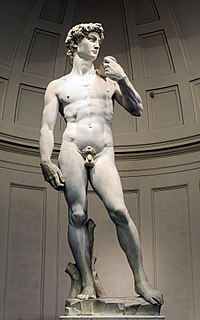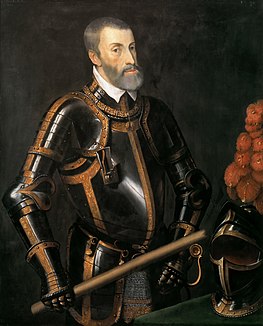
A citadel is the core fortified area of a town or city. It may be a castle, fortress, or fortified center. The term is a diminutive of "city" and thus means "little city", so called because it is a smaller part of the city of which it is the defensive core. Ancient Sparta had a citadel as did many other Greek cities and towns.
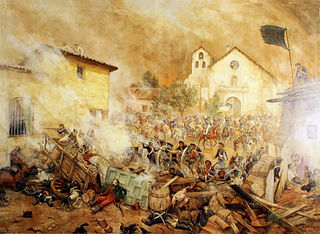
A siege is a military blockade of a city, or fortress, with the intent of conquering by attrition, or a well-prepared assault. This derives from Latin: sedere, lit. 'to sit'. Siege warfare is a form of constant, low-intensity conflict characterized by one party holding a strong, static, defensive position. Consequently, an opportunity for negotiation between combatants is not uncommon, as proximity and fluctuating advantage can encourage diplomacy. The art of conducting and resisting sieges is called siege warfare, siegecraft, or poliorcetics.

Abruzzo is a region of Southern Italy with an area of 10,763 square km and a population of 1.2 million. It is divided into four provinces: L'Aquila, Teramo, Pescara, and Chieti. Its western border lies 80 km (50 mi) east of Rome. Abruzzo borders the region of Marche to the north, Lazio to the west and south-west, Molise to the south-east, and the Adriatic Sea to the east. Geographically, Abruzzo is divided into a mountainous area in the west, which includes the Gran Sasso d'Italia, and a coastal area in the east with beaches on the Adriatic Sea.

A fortification is a military construction or building designed for the defense of territories in warfare, and is also used to solidify rule in a region during peacetime. The term is derived from the Latin fortis ("strong") and facere.

The Province of L'Aquila is the largest, most mountainous and least densely populated province of the Abruzzo region of Southern Italy. It comprises about half the landmass of Abruzzo and occupies the western part of the region. It has borders with the provinces of Teramo to the north, Pescara and Chieti to the east, Isernia to the south and Frosinone, Rome and Rieti to the west. Its capital is the city of L'Aquila.
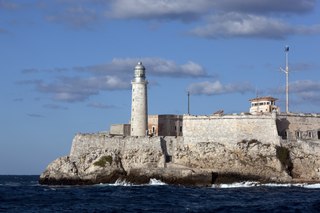
Morro Castle, named after the three biblical Magi, is a fortress guarding the entrance to Havana bay in Havana, Cuba. The design was drawn up by the Italian engineer Battista Antonelli; originally under the control of Spain, the fortress was captured by the British in 1762, and was returned to the Spanish under treaty terms a year later.
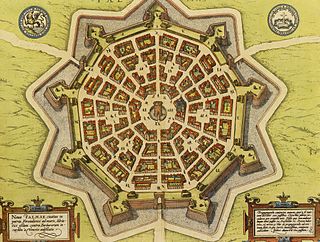
A bastion fort or trace italienne, is a fortification in a style that evolved during the early modern period of gunpowder when the cannon came to dominate the battlefield. It was first seen in the mid-15th century in Italy. Some types, especially when combined with ravelins and other outworks, resembled the related star fort of the same era.
The Fort System of Valdivia are a series of Spanish colonial fortifications at Corral Bay, Valdivia and Cruces River established to protect the city of Valdivia, in southern Chile. During the period of Spanish rule (1552–1820), it was one of the biggest systems of fortification in the Americas. It was also a major supply source for Spanish ships that crossed the Strait of Magellan.
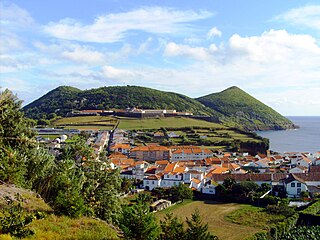
The Fortress of São João Baptista, also known as the Fort of São Filipe or Fort of Monte Brasil is a historic fortress and defensive emplacement, located in the civil parish of Sé, municipality of Angra do Heroísmo in the Portuguese island of Terceira, archipelago of the Azores.

The Lines of Contravallation of Gibraltar, known in English as the "Spanish Lines", were a set of fortifications built by the Spanish across the northern part of the isthmus linking Spain with Gibraltar. They later gave their name to the Spanish town of La Línea de la Concepción. The Lines were constructed after 1730 to establish a defensive barrier across the peninsula, with the aim of preventing any British incursions, and to serve as a base for fresh Spanish attempts to retake Gibraltar. They played an important role in the Great Siege of Gibraltar between 1779 and 1783 when they supported the unsuccessful French and Spanish assault on the British-held fortress.The siege was ended after the lines of contravallation were attacked by British and Dutch forces under the command of the Governor of Gibraltar,General Augustus Eliot.The attack caused the Spanish forces to retreat and abandon the fortifications and the combined British led forces virtually destroyed all the spanish gun batteries and the enemy cannon and munitions either captured or destroyed.This attack is still commemorated to this day and is known as 'Sortie Day'.

The Cittadella of Alessandria is a star fort and citadel in the city of Alessandria, Italy. It was built in the 18th century by the Kingdom of Sardinia, and today it is one of the best preserved fortifications of that era. It is one of the few fortifications in Europe still in their original environment, since there are no buildings blocking the views of the ramparts, or a road that surrounds the ditches.

Castello di Ocre is a medieval castle in Ocre, Province of L'Aquila, Abruzzo, southern Italy.

Rocca Orsini is a Middle Ages castle in Scurcola Marsicana, Province of L'Aquila (Abruzzo).
The War of L'Aquila was a conflict in 15th-century Italy. It started in 1423 as a personal conflict against the condottiero Braccio da Montone and the city of L'Aquila in Abruzzo, but later turned into a national conflict when the forces of the Duchy of Milan, the Republic of Florence, the Papal States and the Kingdom of Naples were also involved. Braccio da Montone was killed in the final battle near L'Aquila.

An Abwurfdach was an easily dismantled construction that protected the curtain walls, cavaliers and bastions of several early modern fortresses. It was once believed that this construction was as old as the 12th century, but most modern historians maintain that the first abwurfdachs were constructed around 1550.

The Siege of Buda was the siege of the Buda castle, part of the twin capital cities of the Kingdom of Hungary, by the Hungarian revolutionary army led by General Artúr Görgei during the Hungarian War of Independence. Part of the Spring Campaign, the siege began on 4 May 1849 and ended with the Hungarian capture of the castle by assault on 21 May. Actually it was the only fortress in the whole war to be taken by storm by the besiegers on either side. All the rest only capitulated after agreements between besiegers and besieged. The siege of Buda was also the shortest siege of the war. The senseless bombardment of Pest by Major General Heinrich Hentzi, the Austrian commander, destroyed the classicist buildings on the shores of the Danube, but other parts of the capitals also suffered heavy damage because of the artillery duels between the two sides. The capture of Buda Castle completed the liberation of the Hungarian capital cities. Thanks to this, the second Hungarian revolutionary Government led by Bertalan Szemere together with Governor-President Lajos Kossuth returned from Debrecen, the interim capital of the Hungarian revolution, to the real capital of Hungary. On 21 May 1849, the same day as the capture of Buda, the two emperors Franz Joseph I of Austria and Tsar Nicholas I of Russia signed the final treaty which agreed on the intervention in Hungary of 200,000 Russian soldiers, in order to help the Habsburg Empire to crush the Hungarian revolution.
The following is a timeline of the history of the city of L'Aquila in the Abruzzo region of Italy.
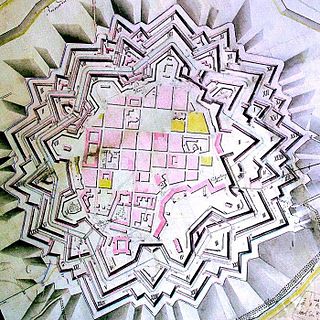
Timișoara Fortress is a historical fortress in western Romania around which the town of Timișoara was built.

